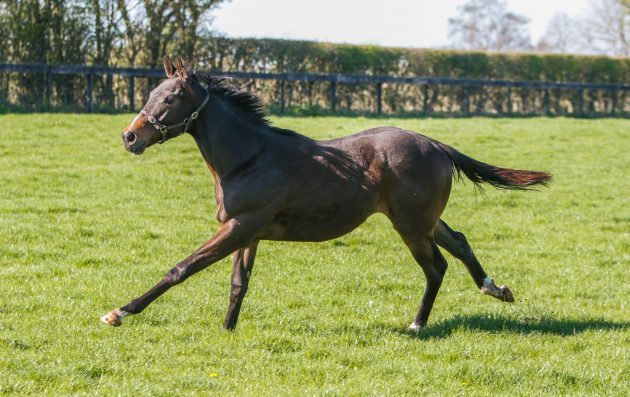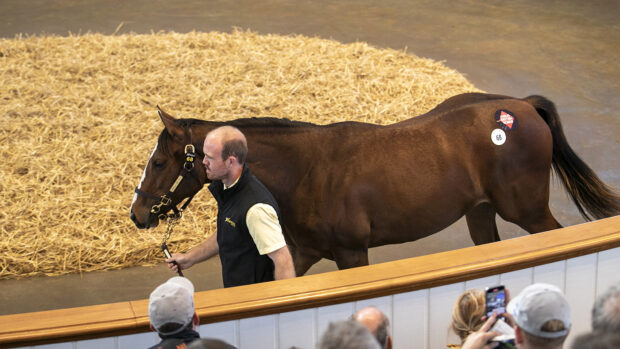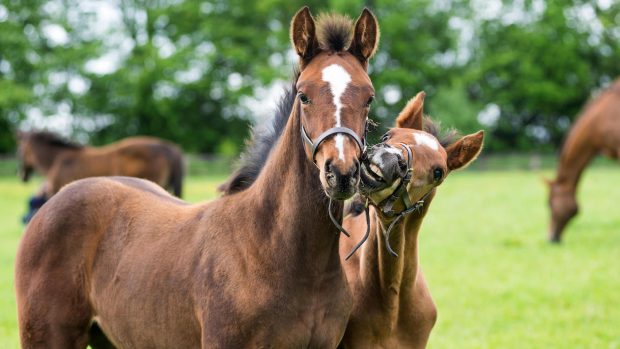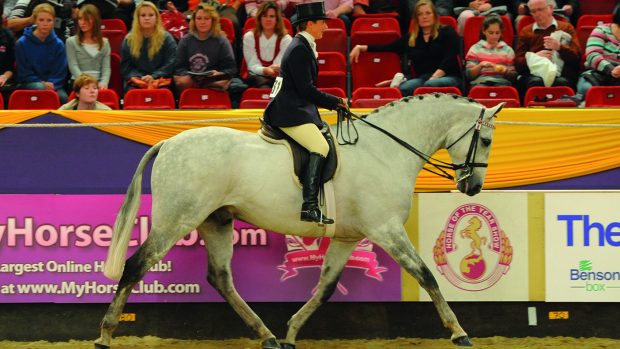An Irish event rider who runs a solo operation buying and selling young racehorses at horse sales made a hefty profit when her Dabirsim colt sold for a remarkable €500,000 (£447,572) on Wednesday (4 October).
Co. Kildare-based Edie Murray-Hayden bought the colt (pictured, above) last year at Goffs November Foal Sale for €56,000 (£50,117).
After 11 months spent at Edie’s 35-acre Gormanstown Stud, during which time he was backed, the youngster was sold for half a million Euros to agents Sackville Donald at the Goffs Orby Yearling Sale.
“His sire was unknown when I bought him, but I fell in love with him and was willing to take a chance on him — there is a lot of luck involved in this game,” Edie told H&H.
“He was very good-looking and an exceptional walker. Despite his unknown sire, he looked a good enough horse and I had done my homework.”
The Irish rider buys and sells — referred to as “pinhooking” in the bloodstock industry — from her 10-stable farm and usually buys one or two foals each year.
“It’s great to see the horses go on and race — it’s even better when they prove themselves,” said Edie, who previously worked for big breeding operations including Coolmore and Godolphin.
“I knew he was an exceptional colt, but I didn’t think he’d go for that much money. Once the price went above €200k it all became a bit of a blur — usually you can remain astute but I definitely got a bit lost at that point.”
Edie (pictured, below) was a member of the first Irish pony eventing team and was the first reserve for Ireland at the 2002 World Equestrian Games. She also produces event horses up to two-star before selling them on, alongside pre-training racehorses.

Courtesy of Gormanstown Stud
This is not her first “pinhooking” success — after setting up Gormanstown Stud, she bought Sir Prancealot for €52,000 as a foal and sold the future sire for €142,000 at the 2011 Orby Sale.
The Willie Mullins-trained Black Hercules, a Cheltenham Festival winner, also spent time in Edie’s care when she bought him as a three-year-old before selling him on.
“I actually find it harder to sell the eventers because you take them up the levels and they gain your trust — you get to know them over a longer period of time,” added Edie.
“With the yearlings, it is slightly different because I only have them for about 10 months before they are sold.
“The profit will be re-invested into my farm — I have been overwhelmed by the media attention and the well wishers.”
For all the latest news analysis, competition reports, interviews, features and much more, don’t miss Horse & Hound magazine, on sale every Thursday.




